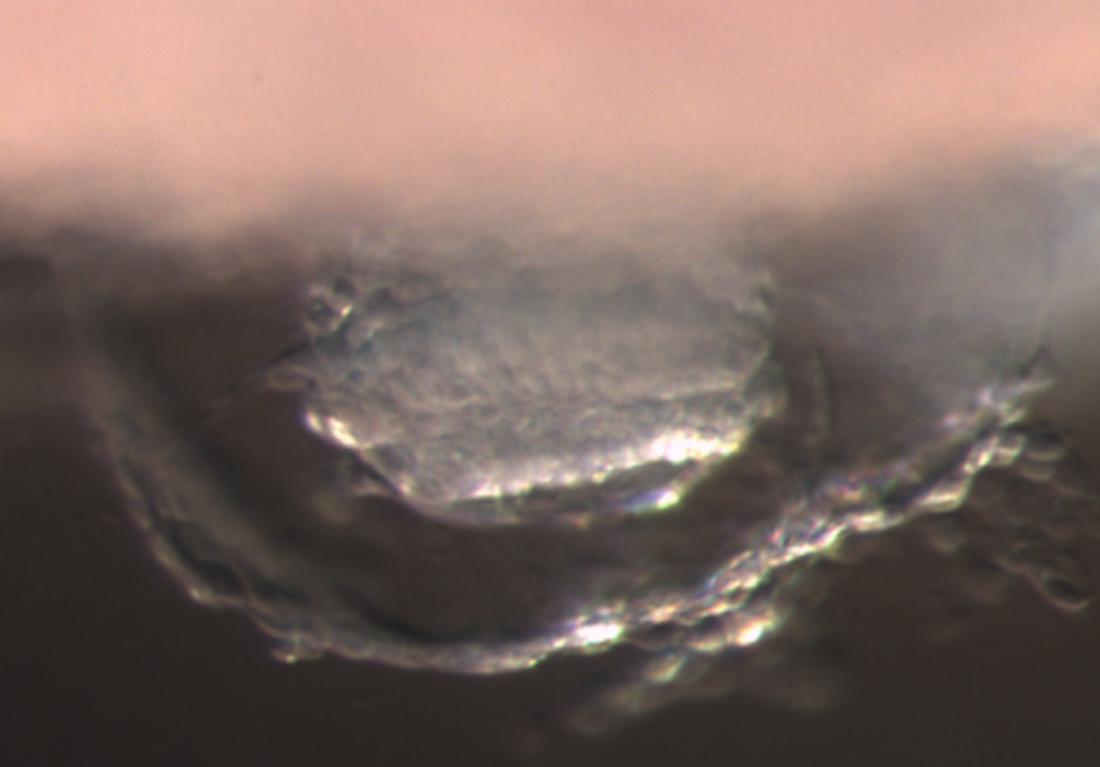A crab-eating monkey embryo post-implantation (14 days into development)
Japan -- Not too shabby, humans. New research shows that certain primate stem cells have pluripotency superior to some types derived from mice. The study, published in Nature, maps how pluripotency differs among mice, monkeys, and humans, and illustrates for the first time a developmental counterpart of primate stem cells.
"We identified a gene set useful for predicting the properties of human and monkey pluripotent stem cells, breaking new ground for studies that utilize human cells," says study author Mitinori Saitou.
Only stem cells derived from early rodent embryos were known to possess the ultimate sort of pluripotency leading to differentiation into any kind of cell.
"Mouse ES cells derived from embryos before implantation can differentiate into all three germ layers and germ cells. Cells from post-implantation embryos aren't so flexible," says Saitou. "Human cells derived from embryos before implantation, on the other hand, are also known to differentiate into each germ layer, but not consistently in the lab. Differentiation into germ cells is something we are currently studying. But where human stem cells fit in the pluripotency spectrum has been uncertain."
"Embryo developmental mechanisms differ considerably among mammals," adds lead author Tomonori Nakamura. "But research on mammalian development has almost exclusively relied on mouse cells because of technical convenience. To better utilize human pluripotent stem cells, it's crucial to understand which embryo stage ES and iPS cells are most similar to in terms of pluripotency."
The researchers undertook a comprehensive analysis of genes expressed during embryo development in crab-eating monkeys, which are close relatives to humans. For this, they developed a new technique that can detect miniscule amounts of gene transcripts, such as those that come from a single cell.
Using this detection method, the team identified gene sets that characterize embryo development in monkeys. They then compared how these genes were expressed in monkey ES and human iPS cells, and observed similar patterns to monkey embryos one week after implantation. "We found that gene expression changes most rapidly directly before and after implantation. Another finding was that monkey embryos maintain pluripotency for at least a week longer than mice after implantation," explains Nakamura. "These together mean that primate pluripotent stem cells possess the same level of pluripotency as those of monkey embryos one week after implantation."
"From an academic standpoint, our study fills an enormous knowledge gap about human embryonic development and also of the evolutionary differences between mammalian development," says Saitou. "In a more applied context, this could contribute to a mechanistic understanding of how infertility happens post-implantation, maintaining pluripotency, and controlling induction of differentiation with more precision."
###
The paper "A developmental coordinate of pluripotency among mice, monkeys and humans" appeared 24th August 2016 in Nature, with doi: 10.1038/nature19096
Kyoto University is one of Japan and Asia's premier research institutions, founded in 1897 and responsible for producing numerous Nobel laureates and winners of other prestigious international prizes. A broad curriculum across the arts and sciences at both undergraduate and graduate levels is complemented by numerous research centers, as well as facilities and offices around Japan and the world. For more information please see: www.kyoto-u.ac.jp/en



